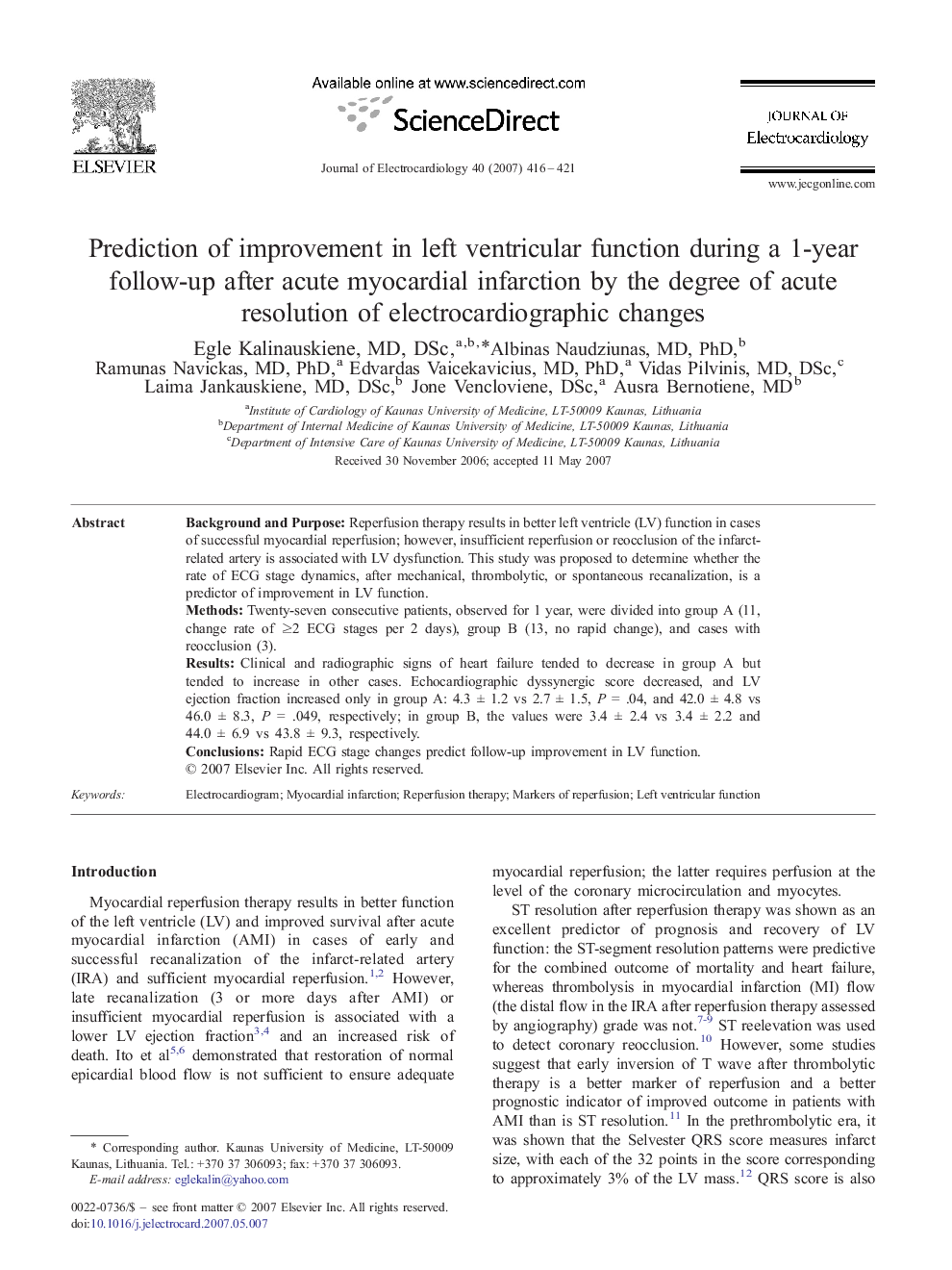| Article ID | Journal | Published Year | Pages | File Type |
|---|---|---|---|---|
| 2969132 | Journal of Electrocardiology | 2007 | 6 Pages |
Background and PurposeReperfusion therapy results in better left ventricle (LV) function in cases of successful myocardial reperfusion; however, insufficient reperfusion or reocclusion of the infarct-related artery is associated with LV dysfunction. This study was proposed to determine whether the rate of ECG stage dynamics, after mechanical, thrombolytic, or spontaneous recanalization, is a predictor of improvement in LV function.MethodsTwenty-seven consecutive patients, observed for 1 year, were divided into group A (11, change rate of ≥2 ECG stages per 2 days), group B (13, no rapid change), and cases with reocclusion (3).ResultsClinical and radiographic signs of heart failure tended to decrease in group A but tended to increase in other cases. Echocardiographic dyssynergic score decreased, and LV ejection fraction increased only in group A: 4.3 ± 1.2 vs 2.7 ± 1.5, P = .04, and 42.0 ± 4.8 vs 46.0 ± 8.3, P = .049, respectively; in group B, the values were 3.4 ± 2.4 vs 3.4 ± 2.2 and 44.0 ± 6.9 vs 43.8 ± 9.3, respectively.ConclusionsRapid ECG stage changes predict follow-up improvement in LV function.
